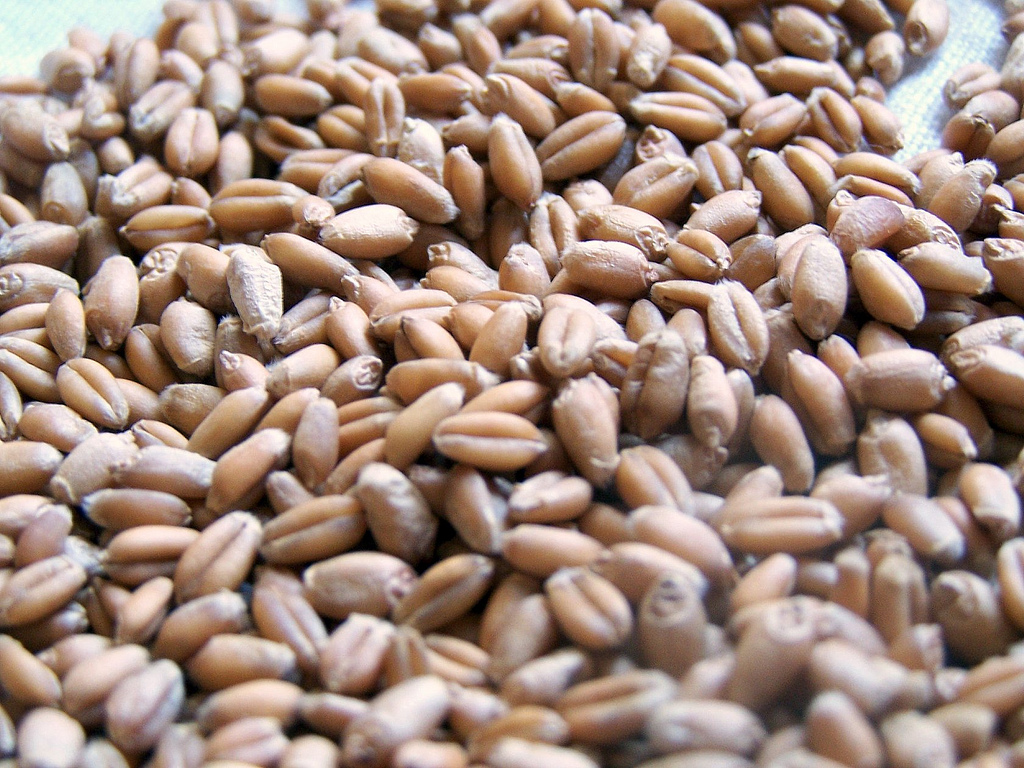|
Kutia
Kutia or kutya ( ; ; ) is a ceremonial grain dish with sweet gravy traditionally served mostly by Eastern Orthodox Christians and some Catholicism, Catholic Christians predominantly in Belarusian cuisine, Belarus, Russian cuisine, Russia, Ukrainian cuisine, Ukraine, but also in parts of Lithuania and Poland during the Christmas–Baptism of Jesus, Feast of Jordan holiday season or as part of a funeral feast. The word with a descriptor is also used to describe the eves of Christmas, New Year, and Feast of Jordan days. Etymology The word ''kutia'' is a borrowing from the Greek language ('bean') or ('grain'). In Ukraine In Ukraine kutіa is one of the two essential ritual dishes at the twelve-dish Christmas Eve supper, Ukrainian Christmas Eve supper (also known as ''Svyata vecherya''). The ritual significance of kutia, as well as uzvar, is quite ancient. Ukrainian ethnographer Fedir Vovk traces the origins of these dishes to the Neolithic era. Before dinner, the kutia is plac ... [...More Info...] [...Related Items...] OR: [Wikipedia] [Google] [Baidu] |
Twelve-dish Christmas Eve Supper
A twelve-dish Christmas Eve supper is traditionally prepared to commemorate Jesus' twelve disciples in Central, Northern and Eastern European cultures, especially those that were formerly part of the Polish–Lithuanian Commonwealth and neighbouring countries. The tradition is especially cultivated in modern-day Poland, where alternatively thirteen meatless dishes on Christmas Eve are sometimes served. Description The specific dishes may differ from country to country, but many of them are universal. Due to the Nativity Fast, no meat, eggs or milk (including cheese) are allowed during the supper. Thus fish, mushrooms and various types of grain are the main offerings. In Poland, the Wigilia supper begins with eating soups, traditionally mushroom soup or barszcz. The ritual for Catholics and Orthodox Christians in Ukraine is to start with kutia. Kutia, poppy milk (''aguonų pienas'') together with ''kūčiukai'' are served as a dessert and forms a significant part of the Lithu ... [...More Info...] [...Related Items...] OR: [Wikipedia] [Google] [Baidu] |
Ukrainian Cuisine
Ukrainian cuisine is the collection of the various cooking traditions of Ukrainians, the people of Ukraine, one of the largest and most populous European countries. It is heavily influenced by the rich dark soil () from which its ingredients come, and often involves many components. Traditional Ukrainian dishes often experience a complex heating process – "at first they are fried or boiled, and then stewed or baked. This is the most distinctive feature of Ukrainian cuisine". The national dish of Ukraine is red borscht, a well-known beet soup, of which many varieties exist. However, (boiled dumplings similar to Pierogi#Ukraine, pierogi) and a type of cabbage roll known as are also national favourites, and are a common meal in traditional Ukrainian restaurants. These dishes indicate the regional similarities within Eastern European cuisine. The cuisine emphasizes the importance of wheat in particular, and grain in general, as the country is often referred to as the "breadbaske ... [...More Info...] [...Related Items...] OR: [Wikipedia] [Google] [Baidu] |
Wheatberry
A wheat berry, or wheatberry, is a whole wheat kernel, composed of the bran, germ, and endosperm, without the husk. Botanically, it is a type of fruit called a caryopsis. Wheat berries are eaten as a grain, have a tan to reddish-brown color, and can vary in gluten and protein content from 6–9% ("soft") to 10–14% ("hard"). They are often added to salads or baked into bread to add a chewy texture. If wheat berries are milled, whole-wheat flour is produced. Wheat berries are similar to barley, rye, and kamut. Wheat berries are the primary ingredient in an Eastern European Christmas porridge called ''kutia''. In France, cooked durum wheat berries are commonly eaten as a side dish instead of rice or corn. This side dish is often called ''ebly'', from the name of the first brand of prepared wheat berries. In Romania and other Eastern European countries, the wheat berries (arpacas) are used in a special sweet dish called koliva for Christian Orthodox ritual. Puffed wheat ... [...More Info...] [...Related Items...] OR: [Wikipedia] [Google] [Baidu] |
Naukova Dumka
Naukova Dumka ( — literally "scientific thought") is a publishing house in Kyiv, Ukraine. It was established by the National Academy of Sciences of Ukraine in 1922, largely owing to the efforts of Ahatanhel Krymsky, a prominent Ukrainian linguist and orientalist. It is one of the oldest scientific and academic publishing houses in the former Soviet Union and became known as ''Naukova Dumka'' in 1964, before which it simply functioned as the official publisher of the National Academy of Sciences of Ukraine. It continues its operations in Ukraine, publishing primarily scientific and historical works as well as dictionaries A dictionary is a listing of lexemes from the lexicon of one or more specific languages, often arranged Alphabetical order, alphabetically (or by Semitic root, consonantal root for Semitic languages or radical-and-stroke sorting, radical an .... Products “Naukova Dumka” has published dictionaries of synonyms of the Ukrainian language, foreign ... [...More Info...] [...Related Items...] OR: [Wikipedia] [Google] [Baidu] |
Pearl Barley
Pearl barley, or pearled barley, is barley that has been processed to remove its fibrous outer hull and polished to remove some or all of the bran Bran, also known as miller's bran, is the component of a Cereal, cereal grain consisting of the hard layersthe combined aleurone and Fruit anatomy#Pericarp layers, pericarpsurrounding the endosperm. Maize, Corn (maize) bran also includes the p ... layer. It is the most common form of barley for human consumption because it cooks faster and is less chewy than other, less-processed forms of the grainBarley from The Cook's Thesaurus (foodsubs.com) such as "hulled barley" (or "barley groats", also known as "pot barley" and "Scotch barley"). Fine [...More Info...] [...Related Items...] OR: [Wikipedia] [Google] [Baidu] |
Lent
Lent (, 'Fortieth') is the solemn Christianity, Christian religious moveable feast#Lent, observance in the liturgical year in preparation for Easter. It echoes the 40 days Jesus spent fasting in the desert and enduring Temptation of Christ, temptation by Satan, according to the Gospels of Gospel of Matthew, Matthew, Gospel of Mark, Mark and Gospel of Luke, Luke, before beginning his Ministry of Jesus, public ministry. Lent is usually observed in the Catholic Church, Catholic, Lutheranism, Lutheran, Moravian Church, Moravian, Anglican Communion, Anglican, United and uniting churches, United Protestant and Eastern Orthodoxy, Orthodox Christian traditions, among others. A number of Anabaptism, Anabaptist, Baptists, Baptist, Methodism, Methodist, Calvinism, Reformed (including certain Continental Reformed Protestantism, Continental Reformed, Presbyterianism, Presbyterian and Congregational church, Congregationalist churches), and Nondenominational Christianity, nondenominational Ch ... [...More Info...] [...Related Items...] OR: [Wikipedia] [Google] [Baidu] |
Dried Fruit
Dried fruit is fruit from which the majority of the original water content has been removed prior to cooking or being eaten on its own. Drying may occur either naturally, by sun, through the use of industrial dehydrators, or by freeze drying. Dried fruit has a long tradition of use dating to the fourth millennium BC in Mesopotamia, and is valued for its sweet taste, nutritional content, and long shelf life. In the 21st century, dried fruit consumption is widespread worldwide. Nearly half of dried fruits sold are raisins, followed by dates, prunes, figs, apricots, peaches, apples, and pears. These are referred to as "conventional" or "traditional" dried fruits: fruits that have been dried in the sun or in commercial dryers. Many fruits, such as cranberries, blueberries, cherries, strawberries, and mango are infused with a sweetener (e.g., sucrose syrup) prior to drying. Some products sold as dried fruit, like papaya, kiwifruit and pineapple, are most often candied fruit ... [...More Info...] [...Related Items...] OR: [Wikipedia] [Google] [Baidu] |
Walnut
A walnut is the edible seed of any tree of the genus '' Juglans'' (family Juglandaceae), particularly the Persian or English walnut, '' Juglans regia''. They are accessory fruit because the outer covering of the fruit is technically an involucre and thus not morphologically part of the carpel; this means it cannot be a drupe but is instead a drupe-like nut. After full ripening, the shell is discarded, and the kernel is eaten. Nuts of the eastern black walnut ('' Juglans nigra'') and butternuts ('' Juglans cinerea'') are less commonly consumed. Description Walnuts are the round, single-seed stone fruits of the walnut tree. They ripen between September and November in the northern hemisphere. The brown, wrinkly walnut shell is enclosed in a husk. Shells of walnuts available in commerce usually have two segments (but three or four-segment shells can also form). During the bumming process, the husk becomes brittle and the shell hard. The shell encloses the kernel or meat ... [...More Info...] [...Related Items...] OR: [Wikipedia] [Google] [Baidu] |
Savella Stechishin
Savella Stechishin, , née Wawryniuk (August 19, 1903 – April 22, 2002), was a Ukrainian Canadians, Ukrainian-Canadian home economist and writer, recipient of the Order of Canada. She has been described as "an ethnocultural social maternal feminist" (Ostryzniuk, 1999). Biography Stechishin was born in Tudorkovychi, Austrian Galicia (today in Lviv Oblast, Ukraine), and her family emigrated to Canada when she was nine in 1913, settling in Krydor, Saskatchewan, Krydor, Saskatchewan. The Ukrainian diaspora is a large one, and her family formed part of a wave that became one of Canada's largest ethnic communities. At age 17 she married Julian Stechyshyn, rector of the St. Petro Mohyla Institute student residence in Saskatoon and brother of Myroslaw Stechishin, and later bore three children, Anatole, Myron, and Zenia. She completed high school and teachers' college, and obtained a Bachelor of Arts degree specializing in home economics from the University of Saskatchewan in 1930, t ... [...More Info...] [...Related Items...] OR: [Wikipedia] [Google] [Baidu] |







